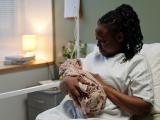Nov 20, 2006 (CIDRAP News) – The Department of Health and Human Services (HHS) has released a new medical care guide to help community leaders plan for and respond to mass casualty events such as an influenza pandemic or a terrorist nuclear attack.
The guide, published by the HHS Agency for Healthcare Research and Quality (AHRQ), describes an array of shortages healthcare workers will face, such as of hospital beds and ambulances, and gives specific recommendations for planners, such as providing offsite care and using taxis, buses, and private cars to transport sick or injured patients.
"To be effective in their planning efforts, local, state, and regional leaders need to be aware of the latest research, tools, and models available," said AHRQ Director Carolyn Clancy, MD, in a Nov 16 AHRQ press release. "With the publication of this new community planning guide, our nation's preparation and response efforts are strengthened by bringing needed focus on advance planning for mass casualty events."
The guide expands on an earlier AHRQ publication, released in April 2005, which outlined altered standards of medical care in a mass casualty setting. The new document, a collaboration between AHRQ and the Office of Public Health Emergency Preparedness, consists of papers written by experts on six topics: ethical considerations, legal issues, prehospital care, hospital and acute care, alternative care sites, and palliative care.
Several potential problem areas are highlighted, such as a complex emergency medical services (EMS) system and lack of standardized EMS disaster training. The guide emphasizes that hospitals will face surge capacity problems, especially since many emergency and trauma services are already at or near full capacity. To handle the overflow, the AHRQ recommends that officials start making plans to provide care in alternate locations such as mobile medical facilities and nonhospital buildings.
The report provides planning checklists and tips for making wise use of limited medical resources. For example, the section on alternative care sites describes how difficult it would be to provide oxygen and suggests a possible solution.
A centerpiece of the report is a case study on pandemic influenza. The authors list preparations for and responses to each stage of a pandemic, from the current prepandemic period to increased and sustained transmission in the United States. For example, during the worst stage of a pandemic, the authors suggest a "bed czar" be appointed to monitor the supply of hospital beds and equipment and make assignments based on availability.
The guide is available on the AHRQ Web site, and print copies will be available in early 2007.
See also:
Nov 2006 AHRQ report "Providing mass medical care with scarce resources: a community planning guide"
http://archive.ahrq.gov/research/mce/
April 2005 AHRQ report "Altered standards of care in mass casualty events"
http://archive.ahrq.gov/research/altstand/


















